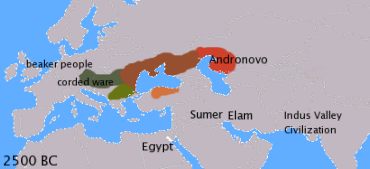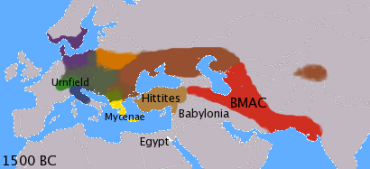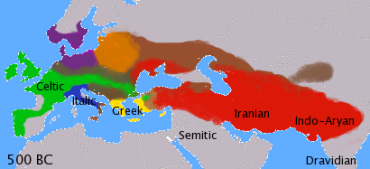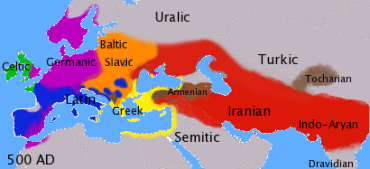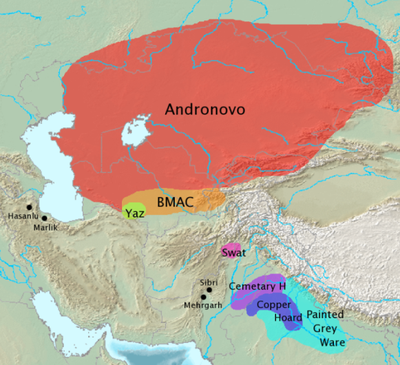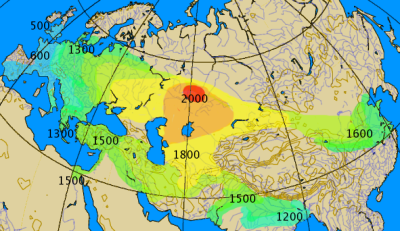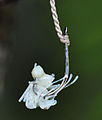User:Joshua Jonathan/Tools

Access to scientific journals[edit]
Archive[edit]
- {{Talk header|search=yes }}
- Example:
- {{User:MiszaBot/config
- |archive = Talk:Example/Archive %(counter)d
- |algo = old(30d)
- |counter = 1
- |maxarchivesize = 250K
- |minthreadsleft = 5
- |minthreadstoarchive = 1
- |archiveheader = {{aan}}
- }}
{{User:MiszaBot/config |archive = Talk:Example/Archive %(counter)d |algo = old(30d) |counter = 1 |maxarchivesize = 250K |minthreadsleft = 5 |minthreadstoarchive = 1 |archiveheader = {{aan}} }}
- Archive box:
- {{archives|search=yes}}
- {{Archives|auto=yes|search=yes|title=Talking, talking, talking...|image=File:Vincent van Gogh - Houses at Auvers - Google Art Project.jpg|image-size=100px}}
- {{WikiProjectBannerShell|1=
- }}
Parameters
| ||||||||||||||||||
|---|---|---|---|---|---|---|---|---|---|---|---|---|---|---|---|---|---|---|
|
Articles for creation[edit]
Background color[edit]
Barnstars and appreciations[edit]
- Wikipedia:Barnstars
- Wikipedia:WikiLove
- Flower (thanks): {{subst:WikiThanks|thankyou message}}
-
Indian Curry Chicken.jpg
-
Meissen-teacup pinkrose01.jpg
-
Sun hidden in clouds.JPG
-
White Tara statue manor place 291107.jpg

|
Message |
| The Wikipedia Indo-European Award | ||
| Message |
Bible[edit]
- Template:Bibleref2 {{bibleref2|1 Corinthians|15:3-7}} - links to BibleGateway (preferred by me)
- Template:Bibleverse {{Bibleverse|Genesis|1:1|NRSV}} - links to oremus Bible Browser
Book creator[edit]
Buddhism[edit]
How not to argue[edit]
Too scholarly...[edit]
Categories[edit]
Chart[edit]
| Vedanta | |||||||||||||||||||||||||||||||
| Advaita | Dvaita (Madhava) | ||||||||||||||||||||||||||||||
| Nirvisesa/ Abheda (Sankara) | Savisesa/ Bhedabheda | ||||||||||||||||||||||||||||||
| Upadhika (Bhaskara) | Achintya (Jiva) | Vishishtadvaita (Ramanuja) | Shuddhadvaita (Vallabha) | ||||||||||||||||||||||||||||
Close paraphrasing[edit]
Columns[edit]
{{div col|colwidth=}}
{{div col end}}
{{col-begin}}
{{col-break}}
{{textm}}
{{col-break}}
{{text}}
{{col-break}}
{{text}}
{{col-end}}
Commons[edit]
Copy-rights[edit]
Copying within Wikipedia[edit]
Dharmic[edit]
|
* Template:Modern Dharmic writers
There has been previous concencus for the deletion of "Dharmic" pages and categories:
The issue has also been extensiveley discussed at Talk:Indian religions, previously "Dharmic religions":
"Navigation templates are particularly useful for a small, well-defined group of articles; templates with a large numbers of links are not forbidden, but can appear overly busy and be hard to read and use. Good templates generally follow some of these guidelines:
If the collection of articles does not meet these tests, that indicates that the articles are loosely related, and a list or category may be more appropriate."
Alternatives have been provided:
In modern times, the orthodox measure of the primacy of the Vedas has been has been joint with the 'grand narrative' of Vedic origins of Hinduism. The exclusion of Jainism and Buddhism excludes a substantial part of India's cultural and religious history from the assertion of a strong and positive Hindu identity. Indian-ideology solves this problem by taking recourse to the notion of "Hinduness", which includes Jainism and Buddhism. A recent strategy, exemplified by Rajiv Malhotra, is the use of the term dhamma as a common denominator, which also includes Jainism and Buddhism.[1]
|
Doorstrepen (overstrike)[edit]
Doorstrepen (overstrike)
<s></s>
Editnotice[edit]
User talk:Joshua Jonathan/Editnotice
Editor interaction[edit]
https://sigma.toolforge.org/editorinteract.py
Exceptional claims[edit]
WP:REDFLAG WP:EXCEPTIONAL
Find[edit]
- Find sources: Google (books · news · scholar · free images · WP refs) · FENS · JSTOR · TWL
- {{find|Joshua Jonathan}}
Fontcoler (kleur van de letters)[edit]
{{font color | blue |Blue}} Blue
Fontsize (lettergrootte) body of article[edit]
Preferences/Appearance/Skin:Vector|Custom CSS - User:Joshua Jonathan/vector.css Set bodycontent fontsize: ...em
Fun[edit]
- Wikipedia:Department of Fun
- {{subst:Smile|~~~}}
Genetics[edit]
Advances in genetic research[edit]
Advances in genetic research
|
|---|
|
Google Books[edit]
Green cheese[edit]
|
 |
Identification[edit]
- User:MastCell/user-rights.js: "Registered 1/8/2014; 5167 edits; reviewer, autoconfirmed"
- Add the following code to Special:MyPage/common.js:
importScript("User:MastCell/user-rights.js");
- User:PleaseStand/User info: "A reviewer, 1 year 10 months old, with 5,167 edits. Last edited 31 minutes ago. From Wikipedia, the free encyclopedia."
- Add the following code to Special:MyPage/common.js or Special:MyPage/skin.js:
importScript("User:PleaseStand/userinfo.js");
India[edit]
Chronology overall[edit]
| Chronology of India | |||||
|---|---|---|---|---|---|
| James Mill (1773–1836), in his The History of British India (1817),[a] distinguished three phases in the history of India, namely Hindu, Muslim and British civilisations.[b][c] This periodisation has been influential, but has also been criticised, for the misconceptions it has given rise to.[d] Another influential periodisation is the division into "ancient, classical, mediaeval and modern periods".[e] | |||||
| World History[f] | James Mill's Periodization[g] | ACMM[h][i] | Chronology of Indian History[j][k][l][m] | ||
| Early Complex Societes (3500-2000 BCE) |
? | Ancient India | Prehistoric Era Indus Valley Civilization | ||
| Ancient Civilisations (2000-500 BCE) |
Hindu civilisations | Early Vedic Period (c. 1750–1200 BCE) | |||
| Middle Vedic Period (from 1200 BCE) | |||||
| Late Vedic period (from 850 BCE) | |||||
| Classical Civilisations (500 BCE-500 CE) |
Second urbanisation Early empires[n] (c. 600–200 BCE)[o] | ||||
| Desintegration[p] and regional states (c. 200 BCE – 300 CE)[q] | |||||
| Classical India | "Golden Age" (Gupta Empire) (c. 320–650 CE)[r] | ||||
| Post-classical age (500-1000 CE) |
Medieval India | Regional Indian kingdoms and Beginning of Islamic raids (c. 650–1100 CE)[s] | |||
| Transregional nomadic empires (1000-1500 CE) |
Muslim civilisations | Delhi Sultanate (north India) (1206–1526 CE) Vijayanagara Empire (south India) (1336–1646 CE) | |||
| Modern age (1500-present) |
Modern India | Mughal empire (1526–1707) | |||
| British civilisations | Maratha Empire British rule (c. 1750 CE – 1947) | ||||
| - | Independent India | ||||
| |||||
Chronology detailed[edit]
Maps[edit]
|
Templates[edit]
| ||||||||||||||||||||||||||||||||||||||||||||||||||||||||||||||||||||||||||||||||||||||||||||||||||||||||||||||||||||||||||||||||||||||||||||||||||||||||||||||||||||||||||||||||||||||||||||||||||||||||||||||||||||||||||||||||||||||||||||||||||||||||||||||||||||||||||||||||||||||||||||||||||||||||||||||||||||||||||||||||||||||||||||||||||||||||||||||||||||||||||||||||||||||||||||||||||||||||||||||||||||||||||||||||||||||||||||||||||||||||||||||||||||||||||||||||||||||||||||||||||||||||||||||||||
| ||||||||||||||||||||||||||||||||||||||||||||||||||||||||||||||||||||||||||||||||||||||||||||||||||||||||||||||||||||||||||||||||||||||||||||||||||||||||||||||||||||||||||||||||||||||||||||||||||||||||||||||||||||||||||||||||||||||||||||||||||||||||||||||||||||||||||||||||||||||||||||||||||||||||||||||||||||||||||||||||||||||||||||||||||||||||||||||||||||||||||||||||||||||||||||||||||||||||||||||||||||||||||||||||||||||||||||||||||||||||||||||||||||||||||||||||||||||||||||||||||||||||||||||||||
| ||||||||||||||||||||||||||||||||||||||||||||||||||||||||||||||||||||||||||||||||||||||||||||||||||||||||||||||||||||||||||||||||||||||||||||||||||||||||||||||||||||||||||||||||||||||||||||||||||||||||||||||||||||||||||||||||||||||||||||||||||||||||||||||||||||||||||||||||||||||||||||||||||||||||||||||||||||||||||||||||||||||||||||||||||||||||||||||||||||||||||||||||||||||||||||||||||||||||||||||||||||||||||||||||||||||||||||||||||||||||||||||||||||||||||||||||||||||||||||||||||||||||||||||||||
| ||||||||||||||||||||||||||||||||||||||||||||||||||||||||||||||||||||||||||||||||||||||||||||||||||||||||||||||||||||||||||||||||||||||||||||||||||||||||||||||||||||||||||||||||||||||||||||||||||||||||||||||||||||||||||||||||||||||||||||||||||||||||||||||||||||||||||||||||||||||||||||||||||||||||||||||||||||||||||||||||||||||||||||||||||||||||||||||||||||||||||||||||||||||||||||||||||||||||||||||||||||||||||||||||||||||||||||||||||||||||||||||||||||||||||||||||||||||||||||||||||||||||||||||||||
Links[edit]
- Wikipedia talk:Noticeboard for India-related topics
- WikiProject India
- DS-alert: {{subst:alert|ipa}}
- "There is a clear consensus among knowledgeable editors who are familiar with the literature that Indo-Aryan migration is the overwhelmingly predominant view among reliable sources in the field, that any alternatives – aside from religiously and nationally motivated ideologies – are indeed WP:FRINGE, and that the Indo-Aryan migration should therefore be presented as an established historical fact (subject, of course, just to the standard proviso that historical models, as a matter of principle, can hardly ever reach the same amount of certainty as natural laws in the physical sciences; the objection that an historical model isn't "testable" and therefore "not scientific" is an obviou red herring.) Fut.Perf. ☼ 08:51, 27 January 2015 (UTC)"
- Wikipedia talk:Fringe theories/Noticeboard#Not very happy about recent closure of debate
- Wikipedia:Administrators' noticeboard#Review Closure of debate : Proposed Hypothesis/Theory as fact
- Talk:Indigenous Aryans/Archive 3#RfC: the "Indigenous Aryans" theory is fringe-theory:
- "the "Indigenous Aryans" proposal which is the subject of this article is a fringe theory according to Wikipedia guidelines. jps (talk) 15:08, 4 February 2015 (UTC)"
Genetics[edit]
- Pugach and Stoneking (2015), Genome-wide insights into the genetic history of human populations
- Pickrell and Reich (2014), Toward a new history and geography of human genes informed by ancient DNA
Mythological views[edit]
- Quora, Is Aryan invasion theory correct or not? (sigh...)(Wikipedia seems to be a much saner place, despite the couple of mythologists moving around here)
Indo-European migrations[edit]
| ||
 |

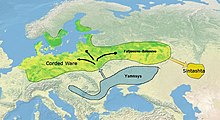
Itchy feelings[edit]
- editorinteract
- Wikipedia:Revert, block, ignore
- Wikipedia:Administrators' noticeboard
- ANI
- Wikipedia:Sockpuppet investigations
- Wikipedia:Administrators' noticeboard/Edit warring
- Edit Interaction Analyzer
Kanji name translation[edit]
Lists[edit]
- {{Tree list}}
Maps[edit]
- WP:WikiProject Maps
- WP:Graphics_Lab/Map_workshop
- Coomons - Blank_maps_of_the_world
- How do I make maps like the ones on wikipedia?
- sharmap.org
- Template:Location map many
Merger, splitting, moving, deleting[edit]
- Wikipedia:Splitting
- Wikipedia:Moving a page
- Wikipedia:Merging
- Wikipedia:Criteria for speedy deletion
- Wikipedia:How to delete a page {{delete | [your reason] }}
Moved discussion[edit]
Template:moved discussion from
The moon is made of green cheese[edit]

[edit]
{{navbar|User:PAGENAME|mini=y}}
Notes[edit]
- {{refn|group=note|note}}
- {{reflist|group=note|2}}
- {{reflist|group=note|2|refs=
- {{refn|group=note|name="example"|text}}
- }}
- NB: {{refn|group=note|note}} doesn't work when the note contains hyperlinks to external pages: {{refn|group=note|[http://www.example.com]}}. In that case, use <ref group=note>[http://www.example.com]</ref>.
- NB2: sfn doesn't seem to work in listed notes; use harv/harvnb/harvtxt instead:
- harv gives (Jones 1930, pp. 10)
- harvnb gives Jones 1930, pp. 10
- harvtxt gives Jones (1930, pp. 10)
- {{efn|text}}
- {{noteslist}}
PageView graph[edit]
{{PageViews graph}}
| Graphs are unavailable due to technical issues. There is more info on Phabricator and on MediaWiki.org. |
Pictures[edit]
 [[File:Public awareness (2862744644).jpg|100px|link=Dharmacakra]]
[[File:Public awareness (2862744644).jpg|100px|link=Dharmacakra]]
Pop-ups[edit]
Portals[edit]
- Portal:Contents/Portals
- Wikipedia:Portal/Instructions
- Template:Portal
- Portal:Indian religions
- Template:Portal/Images/Indian religions
- {{Subject bar|b=y|commons=y|q=y|s=y}}
Quote[edit]
{{talkquote|quote}}
{{tq|quote}}
Quote boxes[edit]
{{Quote box|This is a quote box}}
Hallo
JJ
| {{tmbox | text =This is a messsage box}} |
This is a quotation
R1a1a[edit]
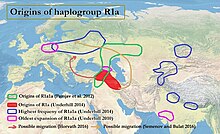

Redirect[edit]
- #REDIRECT [[Zen]]
References[edit]
sfn[edit]
- Template:Sfn
- Template:Sfn#More than one work in a year
- {{sfn|last|year|p=xx}}
- refname (in citation): ref={{harvid|Basu et al.|2016}}
- quote: {{sfn|Smith|2011|p=2|ps=: quote}}
- quote + reference (harvtxt): {{sfn|Smith|2011|p=2|ps= quoted in {{harvtxt|Jones|2010|p=343}}}}
- {{Citation | last = | first = | year = | chapter= | editor-last = | editor-first= | title = | publisher = | isbn = | url =}}
Harvard[edit]
- Template:Harvard citation documentation#How to use]]:
- In the references section (or in an earlier footnote):
{{cite bookorcite journal, etc | ref=harv | ... other appropriate parameters ...}}
- or
- In the references section (or in an earlier footnote):
- Template:Harvard citation documentation#Possible issues]]
- {{harvnb|Jones|1968|p=x}} Jones 1968 p.x
- {{harvtxt|Jones|1968|p=x}} Jones (1968, p.x)
- {{harv|Jones|1968|p=x}} (Jones 1968, p.x)
Book references[edit]
- {{Reflist|3}}
- {{Reflist|30em}}
- {{Reflist|colwidth=15em}}
- {{reflist talk}}
- {{refbegin|30em|indent=yes}}
Web-references[edit]
- {{Reflist|group=web}}
Talkpages[edit]
- {{reflist-talk}}
Sources[edit]
- {{Refbegin}}
- {{Citation | last =McRae | first =John | author-link =article-name of author | year =2003 | title =Seeing Through Zen | place = | publisher =The University Press Group Ltd}}
- {{Refend}}
|ref=none
Google Books[edit]
Web-sources[edit]
<ref group=web name="a" />
{{r|"a"|group=web}}
{{reflist|group=web|refs=
<ref group=web name="a">[http A]</ref>
<ref group=web name="b">[http B]</ref>
<ref group=web name="c">[http C]</ref>
}}
- Examples: Indigenous Aryans
Wikipedia Help-pages on references[edit]
harv-error[edit]
See JJ common.js harv-error detector
Reverting[edit]
See also[edit]
{{See also|Zen#Zen practice|l1=Zen practice}}
Smiley[edit]
Sources & OR[edit]
{{find sources|Joshua Jonathan}} Find sources: Google (books · news · scholar · free images · WP refs) · FENS · JSTOR · TWL
Using secondary and tertiairy sources, instead of using primary sources, is a basic rule of Wikipedia:
"Wikipedia articles should be based on reliable, published sources, making sure that all majority and significant minority views that have appeared in those sources are covered (see Wikipedia:Neutral point of view)."
And also:
"Articles should rely on secondary sources whenever possible. For example, a review article, monograph, or textbook is better than a primary research paper. When relying on primary sources, extreme caution is advised: Wikipedians should never interpret the content of primary sources for themselves. See Wikipedia:No original research."
Tables[edit]
Basic table[edit]
| Cel 1 | Cel 2 | Cel 3 |
|---|---|---|
| Cel 4 | Cel 5 | Cel 6 |
| Cel 7 | Cel 8 | Cel 9 |
Colspan[edit]
| 1 | Xuefeng Yicun (822-908) (雪峰 义 存 | |
| 2 | pietje | Marietje |
Bodhidharma-table[edit]
| The Continued Biographies of Eminent Monks Xù gāosēng zhuàn 續高僧傳 of Dàoxuān 道宣 (596-667) |
The Record of the Transmission of the Dharma-Jewel Chuán fǎbǎo jì 傳法寶記 of Dù Fěi 杜胐 |
History of Masters and Disciples of the Laṅkāvatāra-Sūtra Léngqié shīzī jì 楞伽師資紀記 of Jìngjué 淨覺 (ca. 683 - ca. 650) |
The Xiǎnzōngjì 显宗记 of Shénhuì 神会 | |
| 1 | Bodhidharma | Bodhidharma | Bodhidharma | Bodhidharma |
| 2 | Huìkě 慧可 (487? - 593) | Dàoyù 道育 | Dàoyù 道育 | Dàoyù 道育 |
| Huìkě 慧可 (487? - 593) | Huìkě 慧可 (487? - 593) | Huìkě 慧可 (487? - 593) | ||
| 3 | Sēngcàn 僧璨 (d.606) | Sēngcàn 僧璨 (d.606) | Sēngcàn 僧璨 (d.606) | Sēngcàn 僧璨 (d.606) |
| 4 | Dàoxìn 道信 (580 - 651) | Dàoxìn 道信 (580 - 651) | Dàoxìn 道信 (580 - 651) | Dàoxìn 道信 (580 - 651) |
| 5 | Hóngrěn 弘忍 (601 - 674) | Hóngrěn 弘忍 (601 - 674) | Hóngrěn 弘忍 (601 - 674) | Hóngrěn 弘忍 (601 - 674) |
| 6 | - | Fǎrú 法如 (638-689) | Shénxiù 神秀 (606? - 706) | Huìnéng 慧能 (638-713) |
| Shénxiù 神秀 (606? - 706) 神秀 (606? - 706) | Xuánzé 玄賾 | |||
| 7 | - | - | - | Xuánjué 玄覺 (665-713) |
Rowspan, colspan[edit]
| Column 1 | Column 2 | Column 3 |
| A | B | |
| C | D | |
| E | F | |
| G | ||
| H | ||
Float[edit]
{| class="wikitable floatright"
Collapsible[edit]
Wiki source
{| class="wikitable mw-collapsible mw-collapsed" style="float:right;"
|-
! Header
|-
| Content that starts hidden
|-
| More hidden content
|}
Rendered result
| Header |
|---|
| Content that starts hidden |
| More hidden content |
Talk Pages[edit]
{{od}}
Templates[edit]
Sidebar[edit]
Clear[edit]
- {{-}}
- {{clr}}
TOC[edit]
{{TOC limit|3}}
Tree list[edit]
- Pre-sectarian Buddhism
- Mahāsāṃghika
- Ekavyāvahārika
- Gokulika
- Caitika
- (Haimavata)
- Sthaviras
- Pudgalavada
- Vātsīputrīya
- Saṃmitīya
- Sarvāstivāda
- (Haimavata)
- (Kāśyapīya)
- (Mahīśāsaka)
- Sautrāntika
- Mulasarvastivada
- Vaibhāṣika
- Vibhajyavāda
- Pudgalavada
- Mahāsāṃghika
Twinkle[edit]
Typography[edit]
- Typography refresh
- User:Ekips39/typographyrefreshoverride.css
- Change the font-family for the whole wiki
- Wikipedia To Redesign Across More Than 32 Million Pages
URL-encoding[edit]
"=" %3D {{=}} encoding list
Warnings[edit]
Welcome[edit]
- {{subst:W-screen}}
Werk in uitvoering[edit]
- {{In use}}
- {{Under construction}}
Wikipedia[edit]
Help-pages[edit]
Copying[edit]
- Wikipedia:Copying within Wikipedia
- " If the re-user is the sole contributor of the text at the other page, attribution is not necessary."
- {{Copied |from= |from_oldid= |to= |diff= }}
Sources & OR[edit]
Problematic editing[edit]
- Wikipedia:Here to build an encyclopedia
- Disruptive editing
- Wikipedia:Ignore all credentials
- WP:42
- Wikipedia:Template messages/Cleanup
- Wikipedia:Free speech
Contact[edit]
Manual of Style/Layout[edit]
- Bibliography: books or other works created by the subject of the article (under a section heading "Works", "Publications", "Discography", etc. as appropriate);
- See also: internal links to related English Wikipedia articles (section heading "See also");
- Notes & References: notes and references (section heading "Notes" or "References", or a separate section for each; see Citing sources);
- Further reading: relevant books, articles, or other publications that have not been used as sources (section heading "Further reading");
- External links: relevant websites that have not been used as sources and do not appear in the earlier appendices (section heading "External links").
- Navigation boxes: internal links organized into navigational boxes (sometimes placed at the top in the form of sidebars)
- Categories
- Interlanguage links
Don't take the bait[edit]
-
Relax!





